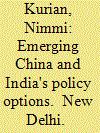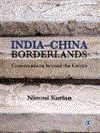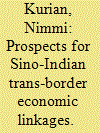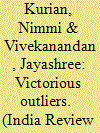| Srl | Item |
| 1 |
ID:
047973


|
|
|
|
|
| Publication |
New Delhi, Lancer Publishers, 2001.
|
| Description |
xii, 227p.
|
| Standard Number |
8170621100
|
|
|
|
|
|
|
|
|
|
|
|
Copies: C:1/I:0,R:0,Q:0
Circulation
| Accession# | Call# | Current Location | Status | Policy | Location |
| 043912 | 338.951/KUR 043912 | Main | On Shelf | General | |
|
|
|
|
| 2 |
ID:
136081


|
|
|
|
|
| Publication |
New Delhi, Sage Publications India Pvt Ltd, 2014.
|
| Description |
xix, 175p.Hbk
|
| Standard Number |
9788132113515
|
|
|
|
|
|
|
|
|
|
|
|
Copies: C:1/I:0,R:0,Q:0
Circulation
| Accession# | Call# | Current Location | Status | Policy | Location |
| 058093 | 327.51054/KUR 058093 | Main | On Shelf | General | |
|
|
|
|
| 3 |
ID:
067239


|
|
|
| 4 |
ID:
182412


|
|
|
|
|
| Summary/Abstract |
The article looks at British India’s Burma campaign of 1941–45 and asks why the decisive battles of Imphal and Kohima appear to be virtually invisible from India’s national imagination today. It further critiques dominant readings of the twin battles for their failure to accommodate the heterogeneity of experiences and contributions of the hill tribes of the India-Burma borderlands who fought in it. The omission appears even more intriguing given that despite being on the winning side, the border communities end up losing the memory battle. While it questions the conventional notion that memory is the postcolonial state’s prerogative, it also recognizes that counter-memories are by no means monolithic. It makes the case for acknowledging alternative constructions and communities of practice that imaginatively decenter the construction of memory in the borderlands. Without connecting with the lives, and in turn, the memories of the border communities who inhabit the physical sites of the war, the cliché of the “forgotten war” will remain an overused, and ultimately, an offensive trope.
|
|
|
|
|
|
|
|
|
|
|
|
|
|
|
|